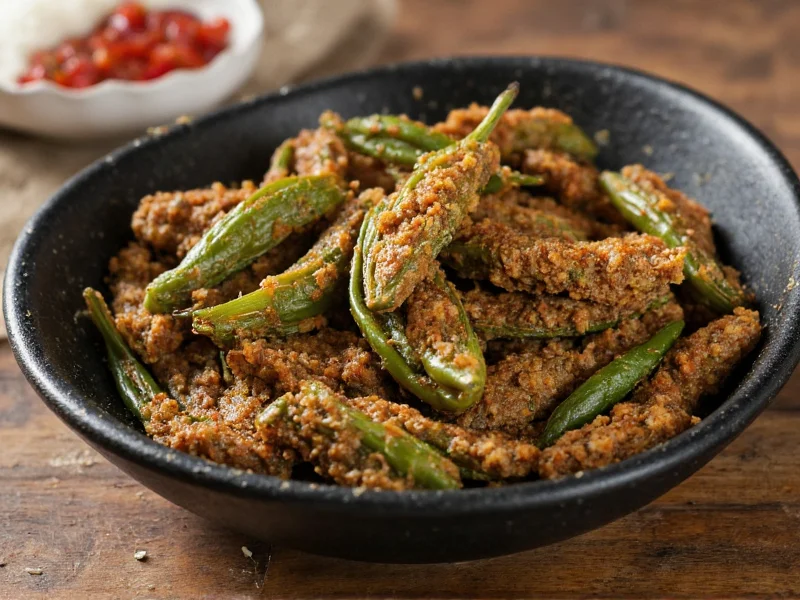Understanding the relationship between chipotle peppers and jalapeños clears up one of the most common misconceptions in culinary circles. While many believe chipotles represent a separate pepper variety, they're actually the product of a traditional preservation technique applied specifically to ripe red jalapeños. This transformation process dates back centuries in Mexican culinary tradition, where smoking and drying peppers served as practical food preservation methods before modern refrigeration.
The Transformation Process: From Jalapeño to Chipotle
When jalapeño peppers reach full maturity and turn deep red, they undergo a specialized smoking process that typically lasts several days. This isn't merely drying—it's a careful smoking technique using wood fires that infuses the peppers with distinctive flavor compounds while removing moisture. The traditional method involves placing ripe jalapeños above a slow-burning fire of oak or other hardwoods in a smokehouse, where temperatures remain low enough to dry without cooking the peppers.
This smoking process triggers the Maillard reaction and other chemical changes that transform both the flavor and appearance of the peppers. Fresh jalapeños contain capsaicin (the compound responsible for heat) along with various volatile compounds. As they smoke, these compounds interact with phenolic compounds from the wood smoke, creating entirely new flavor molecules that give chipotles their characteristic smoky depth.
Etymology and Cultural Significance
The term "chipotle" comes from the Nahuatl (Aztec) language, combining "chil" ( chili pepper) and "poctli" (smoked), literally translating to "smoked chili." This linguistic origin confirms that chipotle refers specifically to the smoking preparation method rather than a distinct pepper variety. In traditional Mexican cooking, this preservation technique allowed communities to store jalapeños through off-seasons while enhancing their culinary versatility.
Chipotle Variations You Might Encounter
While the authentic chipotle is simply a smoked jalapeño, you'll find several commercial preparations:
| Chipotle Product | Preparation Method | Flavor Profile | Common Uses |
|---|---|---|---|
| Morro Chipotle | Whole smoked jalapeños, dried naturally | Intense smokiness, moderate heat | Rehydrated for sauces, stews |
| Tarascas Chipotle | Smoked jalapeños dried with stems intact | More concentrated smoky flavor | Specialty dishes, artisanal cooking |
| Chipotle in Adobo Sauce | Rehydrated chipotles in tomato-vinegar sauce | Complex, tangy, smoky heat | Ready-to-use in recipes, marinades |
| Chipotle Powder | Ground dried chipotles | Concentrated smoky heat | Seasoning blends, rubs, spice mixes |
Debunking Common Misconceptions
Many home cooks confuse chipotle peppers with other dried peppers or assume they're a separate species. Understanding these distinctions helps you use them correctly:
- Chipotle vs. regular dried jalapeños: Regular dried jalapeños (sometimes called "japones") lack the smoking process, resulting in a completely different flavor profile—more vegetal and less complex than true chipotles.
- Chipotle vs. other smoked peppers: While you can smoke other pepper varieties, only smoked jalapeños qualify as authentic chipotles. Smoking a serrano creates a different product entirely.
- Chipotle heat level: Contrary to popular belief, the smoking process doesn't increase heat—it concentrates it as moisture leaves. A chipotle typically measures 2,500-8,000 Scoville units, similar to its fresh jalapeño counterpart.
Culinary Applications and Substitution Guidance
When incorporating chipotle peppers into your cooking, consider these practical tips:
For recipes calling for chipotle in adobo sauce, remember that each pepper typically contains about 1-2 teaspoons of sauce. Remove seeds and membranes to reduce heat while maintaining smoky flavor. When rehydrating whole dried chipotles, steep them in hot water, broth, or even orange juice for 20-30 minutes until pliable.
If you're wondering what is chipotle pepper made from when substituting, understand that no single ingredient perfectly replaces chipotle's unique combination of smoke and heat. A reasonable approximation combines smoked paprika with a touch of cayenne and liquid smoke, though this lacks the complexity of authentic chipotle.
Chefs seeking to understand the difference between chipotle and jalapeno for menu development should note that chipotles work best in dishes where their smokiness can shine—think mole sauces, braised meats, and hearty bean dishes. Fresh jalapeños provide brighter, grassier heat better suited for salsas, salads, and raw applications.
Storage and Handling Best Practices
Proper storage maintains chipotle quality. Keep whole dried chipotles in an airtight container in a cool, dark place where they'll remain potent for up to a year. For chipotles in adobo, transfer opened cans to glass containers and refrigerate for up to three weeks, or freeze in ice cube trays for longer storage. Always wear gloves when handling chipotles, as the concentrated capsaicin can irritate skin and eyes.
Exploring Chipotle's Versatility Beyond Traditional Uses
Modern chefs have expanded chipotle applications far beyond traditional Mexican cuisine. Consider adding minced chipotle to chocolate desserts for a surprising smoky contrast, blending into mayonnaise for elevated sandwiches, or incorporating into barbecue rubs. The compound guaiacol created during smoking pairs exceptionally well with sweet elements, explaining why chipotle appears in everything from craft beers to premium ice creams.











 浙公网安备
33010002000092号
浙公网安备
33010002000092号 浙B2-20120091-4
浙B2-20120091-4